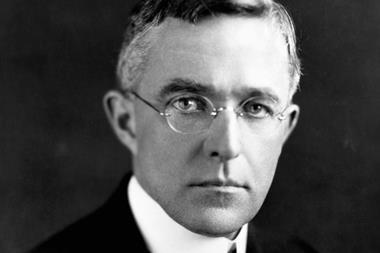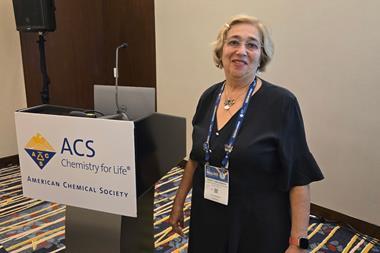But with more consideration for their audience, they don’t have to be

Jeff flips open his laptop and looks around the room filled with PhD students and postdocs visiting his company. ‘Thanks for your interest. Before our discussion round and the site tour, I’d like to show you some slides about who we are.’ The group appears interested, but throughout the presentation, their eyes are getting tired. It’s a recurring motif. Company presentations are the low point of such days.
A couple of weeks before the event, I had a call with Jeff to discuss the details. ‘We always start with a company presentation to introduce ourselves.’ My mind was racing. 99% of company presentations are dead boring, not the best start to the day. How could I talk him out of this compulsory dose of corporate boredom? ‘What is the aim of the presentation exactly?’ was my attempt to motivate him to question the usefulness of showing us the ‘77 facts about our company and its Great CEO.’ ‘Look, Philipp, the corporate communications department demands this, and I think it warms up the group pretty well.’
Mistaken fears
Why are company presentations so often bad? It begins with the fear of making mistakes. One mustn’t blurt out any confidential information. One mustn’t offend anyone. One mustn’t omit some peripheral detail. At some point, the streamlined corporate machinery has removed all kinks from the presentation, rendering the final product bland and unappealing. Fact after fact after fact in a narrative desert. And if there is an attempt at transporting emotions, it’s cringeworthy: ‘We’re not passionate about customer satisfaction, we’re addicted to it.’
The second problem is that the presentation’s only aim seems to be self-marketing. Yes, we know that your company does excellent work; otherwise, we wouldn’t be here, right? If the presenter is forced to praise the company, then at least let the audience ‘smell the coffee’. Show them an example of how the company acted in a specific case and what that meant for the employees: ‘We develop a malaria vaccine. It’s a 30-year programme with little economic promise. I am proud to work here because we serve the pharmaceutical industry’s promise to save lives. Our blockbuster drugs, aiming at alleviating rich-world problems, enable such programmes.’
This dominant drive to self-marketing directly leads to the next problem, the lack of contrast and context. ‘Our R&D expenditure is £2.3 billion.’ Fantastic, that sounds like a lot of money, but the company is also really big. People without an economics background can’t make any sense of these wow-figures. If you have to praise the company, at least provide some contrast. ‘We spend 19% of our revenue on R&D, which is twice the industry’s average.’ With this simple context, the numbers come to life.
Whose needs do you serve?
The excessive self-marketing also causes the last problem, the most dramatic of them all. The presentation is tailored solely to the presenter’s needs, not the audience’s. This is because in most companies, the same presentation is served to all types of audiences. Such generic presentations overlook the first commandment of effective presentations: adapt to the audience to serve them well. Standard company presentations are too self-centred to truly serve their audiences.
Tailor your message for the audience
It’s not just a problem of streamlined corporate communications. Without due reflection on the way we communicate, most of us fall into the trap of speaking for ourselves rather than for our audience. Try it yourself: at the next conference, start a conversation over a coffee and try to be the first to ask, ‘So, what are you working on?’ Often scientists will shoot a generic, jargon-heavy monologue at you without stopping to ask what your background is or what you’re interested in.
While so many company presentations are bad, there are noteworthy exceptions. In a similar setting to Jeff’s presentation, Lisa welcomes a group of junior researchers who visit her company for an orientation about their future careers. She takes her position in front of the group. After a moment of silence, she closes the laptop and sits on her speaker’s desk. ‘Welcome to our company. For the next half hour, I am not Dr Sanchez to you, but I am Lisa. I can put up the slides that show you how many people work in our London site or the number of products we market in Asia, if that interests you. However, if you have a question for the person Lisa, this should have priority.’ All eyes follow Lisa, you could hear a pin falling. We spent 30 wonderful minutes with her, in which the participants got precisely what they were looking for.
While bad company presentations are a waste of time, they are also a reminder of how to communicate well – in any setting. Tailor your message for the audience, not for the speaker.












No comments yet